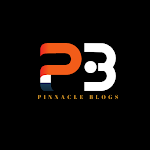What is Blog SEO?
Blog SEO is the most common way of utilizing specialized and on-page SEO strategies to expand your blog's permeability in the natural hunt. While utilizing blog SEO, you have two essential objectives:
To ensure web crawlers can find and comprehend your blog entries so they can convey them to significant searchers
To ensure you're composing applicable blog content that lines up with your crowd's necessities and interests
The strategies used to do this are not entirely not quite the same as those you'd use to enhance the substance on different pieces of your site. Thusly, in the event that you're now an SEO professional, these procedures might be natural to you.
The main distinction is that while you're dealing with a blog, you're unequivocally utilizing SEO to help a continuous long-structure content procedure. That implies creating inside and out, instructive, and significant substance that lines up with your crowd's requirements and searches goal and utilizing the SEO strategies you may definitely be aware to assist that substance with succeeding.
Why is Blogging Important for SEO?
With each post you make and advance, you can:
Increment your perceivability in natural pursuit
Lay out your believability as a confided in asset
Construct your site's power over the long haul
Envision you're beginning a B2C innovation organization. You need to assist purchasers with understanding their tech, use it all the more successfully, and take care of issues without paying an excessively high price for costly fix administrations.
To find lasting success, you need to get your name out there, so clients know you and demonstrate that you're reliable and learned in your field. Writing for a blog can assist you with doing that.
A very much kept up with blog gives your website a constant flow of shiny new, unique, quality substance. Over the long run, as perusers and web search tools find that substance, you'll start to be perceived as a dependable wellspring of data, which will assist you with positioning higher.
6 Ways To Optimize Blog Content for Search Engines
Website design enhancement is a big picture approach. It can require investment to see the outcomes. So in the event that you're simply getting everything rolling, it's OK to piece your errands and tackle the more open things first while you sort out the more mind boggling parts of your new SEO procedure.
To make it somewhat more straightforward for you, we've separated our best blog SEO tips to work on your substance and climb the rankings in search.
Distinguish Your Blog's Target Audience
Before you at any point begin composing, on the off chance that you maintain that your blog should find true success, you must realize who is probably going to understand it. That is your interest group, the gathering who most are probably going to:
Look for the terms you're focusing on
Need items or administrations given by organizations like yours
Turn into your clients (ideally)
To characterize your main interest group, investigate your ongoing client socioeconomics. Figure out who's as of now captivating with your image. You presumably as of now have a ton of this data close by. A couple of significant wellsprings of data:
Data you've gathered during lead age and deals
Bits of knowledge from your outreach group
Your Google Analytics information
Then, examine your virtual entertainment presence. Chances are, you've developed a following as of now. However, who are they? Fortunately, Facebook and Instagram offer Audience Insights reports to assist you with figuring out your crowd socioeconomics. Here, you can learn:
Their age and orientation breakdown
Where they are
The best chance to post, in view of your devotee movement
At long last, figure out how your crowd contrasts and the opposition utilizing the Traffic Analytics Audience Insights report. Enter your area and your significant rivals' spaces to find out:
The general size of every one of your crowd
How much your crowd's cross-over
Different sites your crowd (or your rival's) are probably going to visit
By assembling this data, you'll have a more complete image of your main interest group. Use what you figure out how to make content that talks straightforwardly to their requirements.
Influence Topic Clusters to Maximize Keyword Research
Complete catchphrase research is basic to a blog's prosperity. If you have any desire to amplify your catchphrase influence, take a stab at making theme bunches.
A theme bunch is a gathering of blog entries that, set up, go top to bottom on a more extensive subject.
They're normally coordinated around a focal center point page that connects to other substances.
With theme bunches, you can target differently related, less serious catchphrases to attempt to rank for a more extensive and more troublesome umbrella watchword. They can have various advantages for your SEO, including:
Working on your blog's permeability by making it more straightforward for web indexes to creep
Expanding your blog's clout in that point after some time
Empowering you to rank for more extensive and more troublesome watchwords
Permitting more effective presents on help less fruitful ones through interlinking
They likewise appeal to Google's inactive semantic ordering (LSI) calculation.
Be that as it may, how would you make a theme group?
To start with, select your support point theme. Pick something pertinent to your business that you have a lot of skill in. Point of support subjects ought to be the essential watchword for your center pages. Then a few related sub-points you need to cover to help it.
Not certain where to begin? Plug a subject you're keen on expounding on into the Keyword Magic Tool. Then, take a gander at the hunt volume and Keyword Difficulty Score to recognize the most proficient ones.
Utilize the broadest watchword for your point bunch's center page. Then, at that point, center around additional particular watchwords for the singular bits of content that center pages connect to.
When you're prepared, enter those watchwords into the Topic Research Tool to produce thoughts for articles.
The Topic Research Tool can produce lots of content thoughts, distinguish moving points, and sort them by volume, trouble, or productivity (high volume, low trouble thoughts).
Add your new point thoughts to your substance schedule to work out your bunch. As you post new articles, ensure you add them to your center point page so perusers (and web indexes) can think that they are later.
Draw in Your Readers with Rich Media, Internal Links, and a Strong CTA
Long-structure composed content isn't the best way to speak with your crowd. Assuming that you believe your blog should stick out, draw in your crowd with rich media like photographs, recordings, sound, or custom infographics.
Rich media can likewise be an extraordinary way to springboard to different bits of group content under a similar support point.
Not certain where to begin? Google gives a convenient instructional exercise on integrating rich media into your substance.
Video content is especially worth the work for another blog entry. Recordings save the client on a page for a specific measure of time, which can assist your skip with rating low.
Video is additionally a well known type of media, as shown by stages like TikTok and YouTube.
Shockingly better, you can frequently reuse blog content for recordings, smoothing out your substance creation process.
In any case, snaring your perusers with rich substance is just around 50% of the fight. To keep them connected on your site after they're done perusing, you'll require a strong inner connecting methodology.
By remembering connects to different pages for each post, you urge perusers to investigate your site further, keeping them on your foundation longer. This can likewise assist with looking through motors find other significant power pages you bring to the table.
The following are a couple of tips for additional viable inward connections:
Try not to involve in excess of five words in your anchor text.
Utilize your anchor text to give setting to the peruser about what they ought to hope to find.
Ensure your connections support your article as well as important and applicable to the peruser.
Establish a Strong Connection in the SERPs (Title, Meta Description, and URL)
It's not difficult to neglect, yet your blog entry presentation likely isn't your peruser's initial feeling of that substance. All things being equal, assuming they're coming from natural pursuit, their initial feeling presumably comes from your page's appearance in the SERPs.
Actually, you don't have unlimited authority over how your page seems when it comes up in query items. In any case, you can in any case further develop it by streamlining your page title, meta portrayal, and URL.
In the first place, pick a drawing in page title. Presently, actually, you get two chances to title your article. The page title is the first of these. You can find it in your page's HTML head component between <title> labels. At the point when you distribute your article, it will show up at the highest point of the program window and SERPs.
The following are a couple of pointers to assist you with composing a more successful page title:
Keep it short. Indexed lists will show the initial 50-60 characters on portable prior to shortening it.
Keep it exact. Your title ought to precisely reflect what's going on with the page. Use words like "how," "what," or "why," and incorporate strong descriptors to pass on the kind of data the peruser will find.
Keep it one of a kind. It could be enticing to reuse a similar title label across your site, yet it's not useful for your SEO or crowd. All things considered, compose another title custom-made for each page.
Then, direct your concentration toward the meta portrayal. While meta descriptors could not straightforwardly influence your SEO, a strong meta portrayal can fundamentally affect your active clicking factor (CTR). At the end of the day, this is your chance to persuade your searchers to visit your page.
It's critical to note here that the meta portrayal you compose probably won't be the one that shows up in indexed lists without fail. Google frequently reworks meta depictions to adjust all the more intimately with the client's hunt.
In view of that, the following are a couple of tips for effective meta depictions:
Mind your personality count. You have space for around two sentences of up to 160 characters.
Mind your most memorable sentences. Assuming Google revises your meta depiction, they frequently pull from the principal sentences of the applicable area for that client's pursuit.
Mind the opposition. Take a stab at looking for the terms you're focusing on yourself, and take a gander at how the pages right now positioning have composed their scraps. Do they share anything for all intents and purpose? Use what you



0 Comments